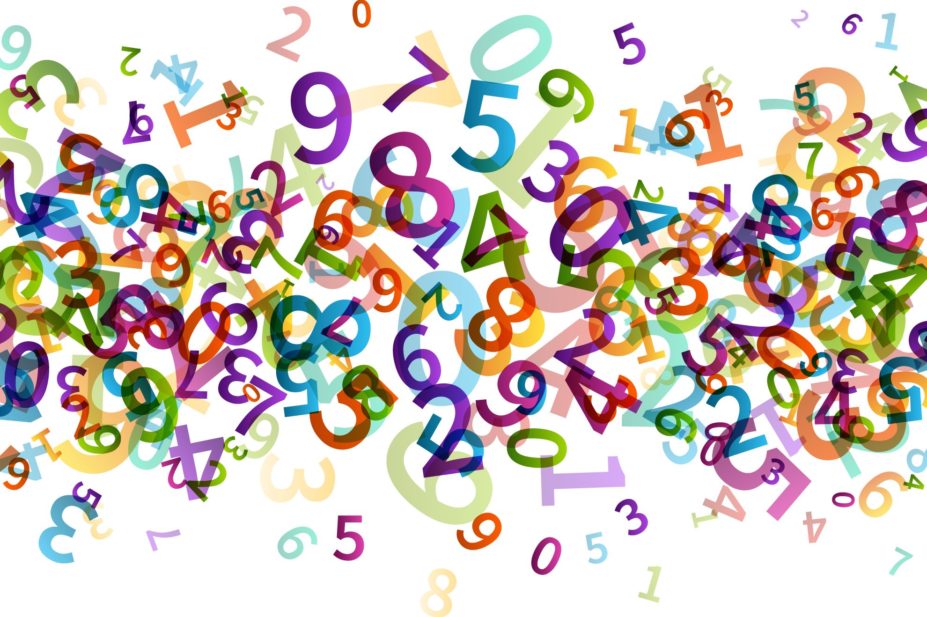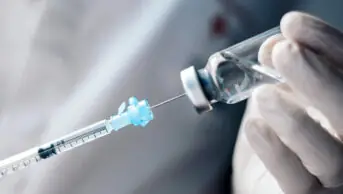
Shutterstock.com
Calculations are an integral part of pharmacy. It is important in practice to be able to accurately complete them and to check the work of colleagues to ensure patients receive the correct treatment at the right dose. The “Peppermint Water” case, that resulted in the death of a child, is a tragic example of what can happen when calculations go wrong.
For those applying for preregistration places the numeracy test is designed to assess mathematical ability rather than clinical knowledge. It is part of the Oriel assessment and involves 10 calculation questions that must be answered in 20 minutes. The answers are entered into a ‘free text’ box instead of multiple choice. The results from this, and other aspects of the oriel application process, are used when ranking applicants applying for preregistration placements.
The following calculation types may be included in the numeracy test:
- Dilutions;
- Concentrations (e.g. expressed as w/v, % or 1 in x);
- Dosage and unit conversions;
- Doses and dose regimens;
- Quantities to supply;
- Using provided formulae.
Those undergoing the Oriel recruitment process should be familiar with the different assessments and should pay particular attention to understanding how to tackle pharmaceutical calculations to ensure good practices are observed (see Box 1: Top tips to remember). See Box 2 for additional advice from those who have recently completed the numeracy assessment.
Box 1: Top tips to remember
- Round at the end of the calculation unless working out a dose involving a tablet or capsule;
- Check to make sure your answer makes sense and that it is realistic (e.g. is this a dose you could conceivably see in the pharmacy?);
- Is the answer logical (e.g. if you are diluting a 5% solution, then the final concentration MUST be less than 5%);
- Read the question at least twice before answering;
- Do not forget to round as per the instructions in the question.
Below are two examples for each of the above calculation types mentioned previously.
Dilutions
Example 1
What volume, in mL, of 0.9% w/v NaCl can be made from 100mL of 9% w/v NaCl?
Method:
C1 x V1 = C2 x V2
Where C1 = 0.9%
V1 = ?
C2 = 9%
V2 = 100mL
Therefore:
0.9% x V1 = 9% x 100mL
V1 = (9% x 100mL) / 0.9%
= 900 / 0.9%
= 1,000mL
Answer:
1,000mL
Tip: Another way to think about it is that as 0.9% is ten times less than 9%, we will need ten times more water than 100mL
Example 2
How much water, in mL, needs to be added to 300mL of a 2% w/v solution of potassium permanganate to reduce the concentration to 0.05% w/v.
Method:
C1 x V1 = C2 x V2
2% x 300mL = 0.05% x V2
V2 = (2% x 300mL) / 0.05%
= 600 / 0.05%
= 12,000mL
The key word is “added” here.
Amount of water to be added = 12,000mL – 300mL = 11,700mL
Answer:
11,700mL
Concentrations
Example 1
How many milligrams of potassium permanganate are there in 400mL of a 0.04% w/v solution?
Method:
0.04% w/v
= 0.04g in 100mL
= 0.16g in 400mL
= 160mg
Answer:
160mg
Example 2
How many milligrams of potassium permanganate are there in 200mL of a 1 in 1,000 solution?
Method:
1 in 1,000
= 1g in 1,000mL
= 0.1g in 100mL
= 0.2g in 200mL
0.2g = 200mg
Answer:
200mg
Dosage and unit conversions
Example 1
A baby is prescribed paracetamol 90mg four times per day, when required, for pyrexia.
How many microlitres of paracetamol 120mg/5mL should be given for a single dose?
Method:
120mg in 5mL
= 60mg in 2.5mL
= 30mg in 1.25mL
= 90mg in 3.75mL
3.75mL = 3,750 microlitres
Answer:
3,750 microlitres
Example 2
A man aged 50 years, weighing 40kg, is prescribed drug C at a total daily dose of 25 milligram/kg in two divided doses. Drug C is available as a 1% w/v solution.
How many mL should he take at each dose?
Method:
Total daily dose = 25mg x 40
= 1,000mg
= 1g daily in two divided doses
1g / 2 = 0.5g twice daily
1% w/v = 1g in 100mL
= 0.5g in 50mL
Answer:
50mL per dose
Doses and dose regimens
Example 1
A doctor prescribes 250mg amoxicillin capsules with instructions for the patient to take ONE capsule THREE times per day for FIVE days.
Calculate, in grams, the total weight of amoxicillin taken by the patient. Give your answer to two decimal places.
Method:
Each day the patient takes 3 x 250mg
= 750mg amoxicillin
So, in five days the patient takes 5 x 750mg
= 3750mg
= 3.75g
Answer:
3.75g
Example 2
A patient weighs 68kg. The recommended dosing for enoxaparin is 1.5mg/kg.
What dose, in mg, is recommended for him?
Method:
68kg x 1.5mg
= 102mg
Answer:
102mg
Quantities to supply
Example 1
In your community pharmacy, a man presents an outpatient prescription for amiodarone:
Amiodarone 200mg three times per day for seven days,
then 200mg twice-daily for seven days,
then 200mg once-daily thereafter.
Treatment duration — 21 days
Calculate the number of 200mg tablets you need to dispense.
Method:
| Week | Tablets per day | Tablets per week |
|---|---|---|
| 1 | 3 | 21 |
| 2 | 2 | 14 |
| 3 | 1 | 7 |
| Total | 42 |
Answer:
42 tablets
Example 2
A patient is prescribed prednisolone as a reducing dose course. He is to take 15mg once-daily, reducing by 5mg every five days until the course is finished.
How many 5mg tablets would need to be supplied to complete the course?
Method:
15mg for 5 days = 3 x 5mg tablets x 5 days = 15 tablets
10mg for 5 days = 2 x 5mg tablets x 5 days = 10 tablets
5mg for 5 days = 1 x 5mg tablets x 5 days = 5 tablets
15 + 10 + 5 = 30 tablets
Answer:
30 tablets
Using provided formulae
Example 1
How much wool alcohols ointment will you need to prepare 200g of Salicylic Acid Ointment BP?
Recipe for Salicylic Acid Ointment BP:
Salicylic acid, finely sifted (2g);
Wool alcohols ointment (to 100g).
Method:
Amount of wool alcohols ointment needed for 100g is 100-2 = 98g, so for 200g:
(200g/100g) x 98g = 196g
Answer:
196g
Example 2
Calculate the quantity of sodium bicarbonate in grams required to produce 20mL of aromatic magnesium carbonate mixture.
Recipe for aromatic magnesium carbonate mixture:
Light magnesium carbonate (300mg)
Sodium bicarbonate (500mg)
Aromatic cardamom tincture (0.3mL)
Chloroform water, double strength (5mL)
Water (to 10mL)
Method:
500mg = 0.5g
Multiply by 2
0.5g x 2 = 1g
Answer:
1g
It is important to know which models of calculators are allowed — this is explained in the Oriel applicant handbook for preregistration programmes commencing in 2021 and in this article by
The Pharmaceutical Journal.
Box 2: Advice from previous Oriel applicants

Source: Emmanuella Aryee
“Prepare adequately”
My advice would be to prepare adequately by practicing at least five pharmaceutical calculations each day leading up to the assessment. It is easier to practice calculations ahead of the assessment rather than leaving it all until the last minute.
Emmanuella Aryee completed her preregistration year with Superdrug in 2020.

Source: Kweku Bimpong
“Check your answers”
Learn to sense check your answers, does your answer make any sense? Is it likely that a six-month old baby will need 1,000 grams per kilogram? On that note, don’t forget to check your units.
Kweku Bimpong is a provisionally registered pharmacist who sits on the NHS Youth Forum and the Royal Pharmaceutical Society’s Early Careers Pharmacist Advisory Group. He completed his preregistration training in 2020.

Source: Steven Cho
“Don’t panic”
The questions are basic pharmaceutical calculations and should not differ much from what you have done in previous years of university so don’t panic and just keep an eye on the time. Believe in yourself! You’ve aced these questions before, you can ace them again!
Steven Cho is a provisionally registered pharmacist at the Royal Cornwall Hospital and host of The PRN Pod. He completed his preregistration training in 2020.

Source: Sally Sosnicka
”Practise, practise, practise!”
Check which types of questions will be covered and practise, practise, practise! There is only 20 minutes for 10 questions, but you’ll breeze through some and others might take longer. If there are any you are confused about, flag them up and come back to them.
Sally Sosnicka is a GP preregistration trainee who graduated from the University of East Anglia in 2020.

Source: Kieran Sproston
“Go back to it”
Managing your time effectively can be challenging. Each question is weighted equally, so if you know a question is going to take a long time, do the other questions first and then go back to it.
Kieran Sproston completed a split preregistration placement with Pfizer and Paydens Pharmacy in 2020 and now works as a formulation scientist for Pfizer.
Additional resources:
The Pharmaceutical Journal Oriel special report for guidance on the Oriel numeracy and situational judgement tests as well as what to look for in a preregistration placement visit;- Introduction to Pharmaceutical Calculations and Pharmaceutical Calculations Workbook available free for students through Pharmacy Knowledge, the digital learning platform for pharmacy schools or for £45 through Pharmaceutical Press if bought as a package.
About the authors
Babir Malik is the Weldricks Pharmacy preregistration lead and teacher practitioner at the University of Bradford and Joanna Domzal-Jamroz is a practice pharmacist based in Scunthorpe.
Neither author is involved in writing questions for the actual Oriel numeracy assessment.
RPS Oriel programme
Third-year MPharm students can join the RPS Oriel programme.
Delivered in collaboration with NHS England, NHS Education for Scotland, Health Education and Improvement Wales and The British Pharmaceutical Students’ Association, this programme provides useful guidance and tips when going through the Oriel recruitment process. It also includes an Oriel workshop and full mock assessment, to enable students to effectively prepare for the Oriel assessment. Find out more information and register at: https://www.rpharms.com/development/students/national-pharmacist-foundation-training-recruitment/oriel



